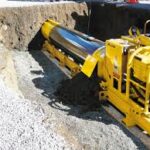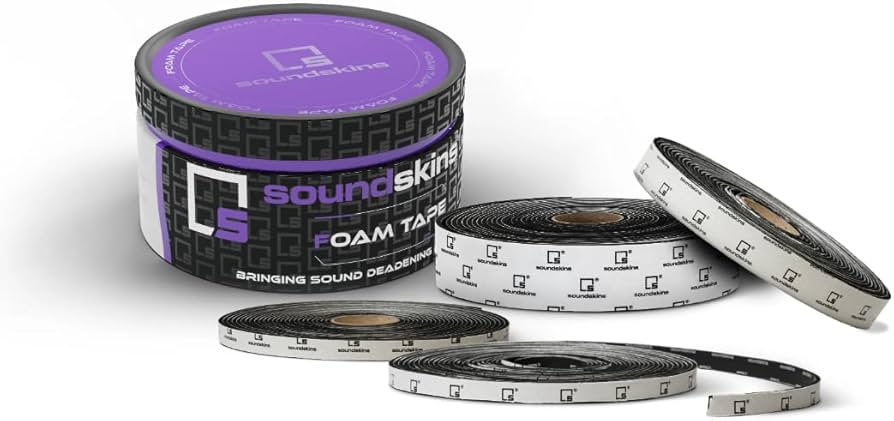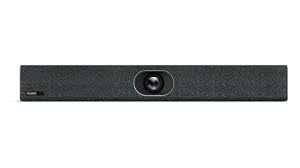Whether you’re customizing a vehicle, building a home studio, or simply trying to enjoy some peace and quiet at home, one thing is certain—sound control matters. Noise pollution isn’t just annoying; it affects comfort, focus, and even the quality of audio experiences. That’s where a practical, no-hassle solution like self adhesive sound deadening material becomes invaluable.
This modern approach to noise control offers high performance without the complicated installation process, making it a go-to for DIYers, audio professionals, and contractors alike.
What Makes Sound Deadening Important?
Before we dive into the advantages of the material itself, it’s worth understanding why sound deadening is such a crucial part of any noise control setup.
Noise typically enters or escapes through surfaces like doors, panels, floors, and ceilings. Without proper treatment, even high-end speakers or insulated windows can’t fully block unwanted sound. That’s why sound deadening is used—to absorb vibrations, block sound waves, and create a more acoustically controlled environment.
And with adhesive-backed materials, applying these solutions has never been easier.
A Closer Look at Self Adhesive Sound Deadening Material
At the heart of this product is its layered structure. Most self adhesive sound deadening material consists of a dense rubber base—often butyl or asphalt-based—paired with an aluminum or foam outer layer. This combination blocks low-frequency vibrations (like those from road noise or bass frequencies) while also reflecting and absorbing higher-frequency sounds.
The key advantage? The peel-and-stick backing.
No extra glues, nails, or equipment required. Just cut the sheet to size, peel off the backing, press it into place, and you’re done.
Applications: Where and How It’s Used
This type of material is known for its versatility. Here are some of the most common (and effective) use cases:
🚗 Automotive Use
-
Door Panels & Roofs: Reduce road and wind noise inside the cabin.
-
Trunk & Wheel Wells: Cut down on vibration and tire noise.
-
Subwoofer Installs: Perfect for lining a dual 10 inch ported subwoofer box, helping prevent unwanted resonance and enhancing bass clarity.
🏠 Home and Office Spaces
-
Walls & Floors: Block external noise or contain internal sounds—ideal for apartments or home theaters.
-
HVAC & Plumbing Areas: Wrap around ducts and pipes to reduce mechanical noise.
🎧 Recording Studios & Media Rooms
-
Vocal Booths: Stop sound from leaking in or out.
-
Acoustic Treatment Base: Acts as a foundational layer beneath foam panels or acoustic tiles.
Benefits That Go Beyond Simplicity
The ease of use is a major selling point, but the real power of self adhesive sound deadening material is in the results it delivers. Here’s what makes it so effective:
✅ Strong Adhesion
Designed for long-term performance, these materials adhere tightly to a variety of surfaces—metal, wood, plastic, or drywall.
✅ Flexible and Easy to Cut
You don’t need industrial tools to work with it. Scissors or a basic utility knife will do the job.
✅ Weather and Heat Resistant
Perfect for automotive environments where heat and vibration are constant challenges.
✅ Improves Audio Performance
Whether in a vehicle or a room, reducing ambient vibration leads to clearer, more accurate sound reproduction.
Tips for Best Results
To maximize the performance of your sound deadening project, keep these tips in mind:
-
Clean the Surface First
Dust, dirt, and oil can affect how well the adhesive sticks. Use rubbing alcohol or a degreaser for best results. -
Use a Roller Tool
Once applied, press the material into place with a hand roller to remove air bubbles and ensure full contact. -
Cover 60-80% of the Surface Area
You don’t need to cover every inch—strategic placement over problem areas can be just as effective. -
Pair with Other Materials for Full Treatment
In some cases, using foam layers or acoustic mats over the base deadening material will further improve sound control.
Is It Worth the Investment?
Absolutely. Whether you’re an audiophile upgrading your sound system, a driver tired of road noise, or a homeowner trying to create a quiet sanctuary, self adhesive sound deadening material offers a cost-effective solution. It provides performance comparable to professional-level products but at a fraction of the cost—and without requiring professional installation.
- How Self Adhesive Sound Deadening Material Is Changing the Game in Noise Reduction
- Whether you’re customizing a vehicle, building a home studio, or simply trying to enjoy some peace and quiet at home, one thing is certain—sound control matters. Noise pollution isn’t just annoying; it affects comfort, focus, and even the quality of audio experiences. That’s where a practical, no-hassle solution like self adhesive sound deadening material becomes invaluable.
- soundskinspro
Related posts:
 Finding the Right MOT Centre Near Me: Why NH Service Center Ltd Is Milton Keynes’ Trusted Choice
Finding the Right MOT Centre Near Me: Why NH Service Center Ltd Is Milton Keynes’ Trusted Choice
 Why More UK Drivers Are Switching to Japanese Used Cars with Nobuko Japan
Why More UK Drivers Are Switching to Japanese Used Cars with Nobuko Japan
 Electric Skateboards: Revolutionizing Urban Travel and Commuting
Electric Skateboards: Revolutionizing Urban Travel and Commuting
 Importance of Employee Training and Certification in Service Quality Assurance
Importance of Employee Training and Certification in Service Quality Assurance
 From Basic Service to Complex Repairs: One Trusted Garage for Your German Car in Abu Dhabi
From Basic Service to Complex Repairs: One Trusted Garage for Your German Car in Abu Dhabi
 American Muscle: Ford Mustang vs. Chevrolet Camaro vs. Dodge Challenger
American Muscle: Ford Mustang vs. Chevrolet Camaro vs. Dodge Challenger
 Autonomous Ride-Hailing is Here: What to Know About the Robotaxi Market
Autonomous Ride-Hailing is Here: What to Know About the Robotaxi Market
 The Future of Auger Boring Equipment in the Construction Industry
The Future of Auger Boring Equipment in the Construction Industry








